Stomach popped out. Abdominal Bulging: Understanding Diastasis Recti vs. Hernia
What are the key differences between diastasis recti and hernias. How can you identify abdominal bulging causes. What treatment options are available for diastasis recti and hernias. When should you seek medical attention for stomach bulging.
Distinguishing Between Diastasis Recti and Hernias
Abdominal bulging can be caused by various conditions, with diastasis recti and hernias being two common culprits. While they may present similar visual symptoms, these conditions have distinct characteristics and require different approaches to treatment.
Key Differences:
- Pain: Hernias often cause significant discomfort, while diastasis recti is typically painless.
- Location: Diastasis recti usually appears as a midline bulge, whereas hernias can occur in various abdominal areas.
- Underlying cause: Diastasis recti involves muscle separation, while hernias are holes in the abdominal wall.
Understanding these differences is crucial for proper diagnosis and treatment. Let’s delve deeper into each condition to gain a comprehensive understanding.
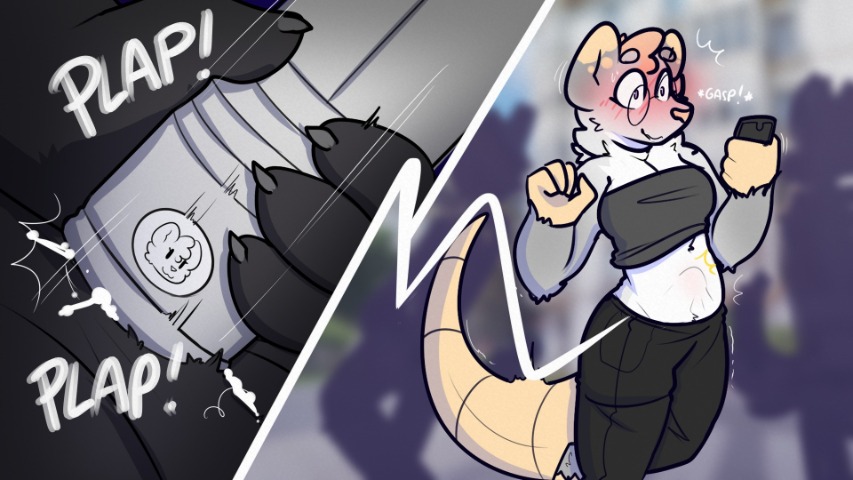
Diastasis Recti: Causes, Symptoms, and Diagnosis
Diastasis recti occurs when the connective tissue between the rectus abdominis muscles stretches, creating an abnormal separation. This condition is particularly common during pregnancy and in individuals with obesity.
Common Causes:
- Pregnancy
- Obesity
- Abdominal wall weakness
- Previous abdominal surgery
- Congenital factors
Can diastasis recti be visually identified? In many cases, yes. The condition typically presents as an oval-shaped bulge between the breastbone and belly button, becoming more prominent during activities that engage the abdominal muscles.
Diagnosis Methods:
- Physical examination: A healthcare provider may observe a “classic bulge” when the patient sits up.
- CT scan: Imaging can reveal the separation of abdominal muscles.
It’s important to note that diastasis recti often doesn’t require surgical intervention. For many individuals, especially those who have recently given birth, the condition may improve naturally over time.

Hernia: Types, Symptoms, and Diagnosis
A hernia occurs when an organ or fatty tissue protrudes through a weak spot in the surrounding muscle or connective tissue. Unlike diastasis recti, hernias can be painful and potentially dangerous if left untreated.
Common Types of Hernias:
- Inguinal (groin)
- Umbilical (belly button)
- Incisional (at a previous surgical site)
- Hiatal (upper stomach)
How can you identify a hernia? Hernias typically appear as a visible bulge or protrusion in the affected area. The bulge may become more pronounced during activities that increase abdominal pressure, such as coughing, sneezing, or lifting heavy objects.
Diagnosis Methods:
- Physical examination: A healthcare provider may be able to feel or see the hernia’s bulge.
- Imaging: CT scans or ultrasounds can provide a detailed view of the abdominal wall.
Unlike diastasis recti, hernias often require surgical repair to prevent complications such as tissue strangulation or intestinal obstruction.
Treatment Options for Diastasis Recti
While diastasis recti may not always necessitate medical intervention, several treatment options can help manage symptoms and improve abdominal strength.
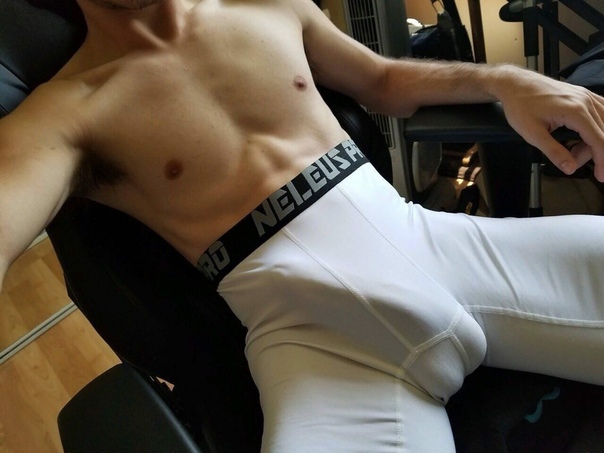
Non-Surgical Approaches:
- Physical therapy: Targeted exercises can help strengthen the abdominal muscles and improve core stability.
- Weight management: For individuals with obesity-related diastasis recti, diet and exercise may help reduce symptoms.
- Abdominal binders: These compressive garments provide additional support to the abdominal wall.
Are there specific exercises for diastasis recti? Yes, certain exercises can be particularly beneficial. These may include pelvic tilts, abdominal compressions, and modified planks. However, it’s crucial to consult with a physical therapist or healthcare provider before starting any exercise regimen.
Surgical Options:
In severe cases where non-surgical methods prove ineffective, surgical intervention may be considered. This typically involves an abdominoplasty, also known as a “tummy tuck,” which can repair the separated abdominal muscles.
Managing and Treating Hernias
Unlike diastasis recti, hernias often require more immediate medical attention due to the potential for complications.

Treatment Approaches:
- Watchful waiting: For small, asymptomatic hernias, a doctor may recommend monitoring the condition.
- Abdominal binders: Similar to diastasis recti, supportive garments can help manage symptoms.
- Surgical repair: This is the primary treatment for most hernias, especially those causing pain or at risk of complications.
When is hernia surgery necessary? Surgery is typically recommended for hernias that are painful, growing, or at risk of strangulation. The specific surgical approach will depend on the hernia’s size, location, and the patient’s overall health.
Types of Hernia Surgery:
- Open repair: Traditional surgery involving an incision over the hernia site.
- Laparoscopic repair: Minimally invasive surgery using small incisions and a camera.
- Robotic-assisted repair: Advanced technique offering enhanced precision and control.
Recovery time and post-operative care will vary depending on the surgical method and individual factors.
Prevention Strategies for Abdominal Bulging
While not all cases of abdominal bulging can be prevented, certain lifestyle modifications may help reduce the risk of developing diastasis recti or hernias.

General Prevention Tips:
- Maintain a healthy weight
- Practice proper lifting techniques
- Strengthen core muscles through regular exercise
- Avoid smoking, which can weaken connective tissues
- Manage chronic coughing or constipation
For pregnant individuals, are there specific prevention strategies? Yes, practicing safe prenatal exercises and using supportive garments during pregnancy may help reduce the severity of diastasis recti. Additionally, focusing on postnatal recovery and gradual return to exercise can aid in healing.
When to Seek Medical Attention
Understanding when to consult a healthcare provider is crucial for managing abdominal bulging effectively.
Red Flags for Immediate Medical Care:
- Severe or increasing pain
- Nausea or vomiting
- Fever
- Discoloration of the bulge
- Inability to pass gas or have a bowel movement
Should you see a doctor for any abdominal bulge? While not all bulges require immediate attention, it’s generally advisable to have any new or concerning abdominal protrusions evaluated by a healthcare professional. This is particularly important if the bulge is accompanied by pain or other symptoms.
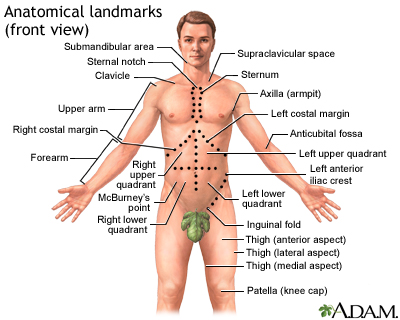
Living with Diastasis Recti or a Hernia
Managing life with diastasis recti or a hernia involves more than just medical treatment. It often requires lifestyle adjustments and ongoing care to ensure optimal quality of life.
Coping Strategies:
- Adapting exercise routines to accommodate the condition
- Using supportive garments during physical activities
- Practicing good posture to reduce strain on the abdominal wall
- Managing stress, which can exacerbate symptoms
- Joining support groups or seeking counseling if the condition affects self-esteem
How can you maintain an active lifestyle with abdominal bulging? With proper guidance from healthcare providers, many individuals can continue to enjoy physical activities. This may involve modifying certain exercises, using supportive equipment, and listening to your body’s signals to avoid overexertion.
Long-Term Management:
For both diastasis recti and hernias, long-term management often involves regular check-ups with healthcare providers. This allows for monitoring of the condition and timely adjustments to treatment plans if necessary. Additionally, maintaining overall health through balanced nutrition, regular exercise, and stress management can contribute to better outcomes and quality of life.
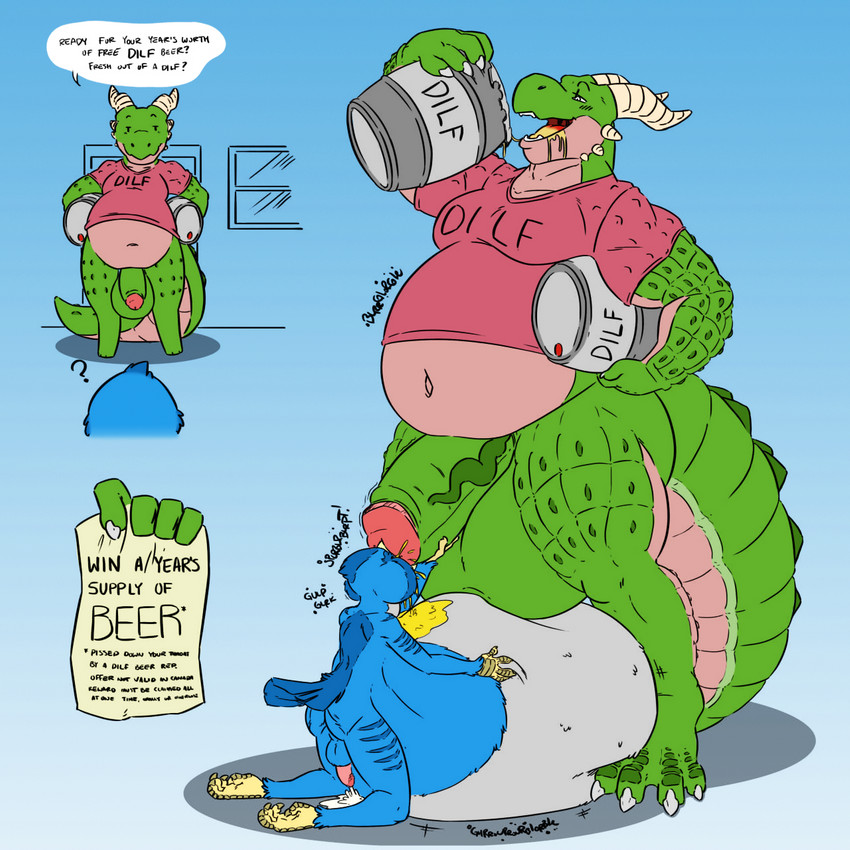
In conclusion, understanding the differences between diastasis recti and hernias is crucial for proper diagnosis and treatment of abdominal bulging. While these conditions may present similar symptoms, their underlying causes and management approaches differ significantly. By recognizing the signs, seeking appropriate medical care, and implementing effective prevention and coping strategies, individuals can effectively manage these conditions and maintain a healthy, active lifestyle. Remember, any persistent or concerning abdominal bulge should be evaluated by a healthcare professional to ensure proper diagnosis and treatment.
Abdominal Bulging: Diastasis Recti or Hernia?
The main way to tell if you have a hernia or diastasis recti is whether you feel pain. Hernias can cause substantial pain while diastasis recti may increase discomfort and abdominal wall weakness.
Let’s take a deeper look into the difference between diastasis recti and hernias.
Diastasis recti
Diastasis recti happens when the connective tissue between your rectus abdominis (six-pack) muscles is stretched, creating an abnormally wide distance between the muscles. This separation can present as a bulge, usually of the upper abdomen, that you may notice when you cough, sit up in bed or lift something heavy.
The most common causes of diastasis recti are pregnancy and obesity, but abdominal wall weakness and previous abdominal surgery can also increase a person’s risk. Diastasis can also be congenital or something that developed in the womb.
Typically, diastasis recti are oval-shaped bulges between the breastbone and belly button and are not painful. A person may notice it during activities that cause them to contract the abdomen.
A person may notice it during activities that cause them to contract the abdomen.
Aside from the prominent bulge, abdominal wall weakness could make any type of weightlifting and core exercises more difficult.
A doctor may diagnose diastasis recti when they see a “classic bulge” present when the patient sits up. A CT scan showing a separation of ab muscles may also lead to a diagnosis.
Diastasis often does not require surgery. For pregnant people, the condition typically improves after childbirth.
Following diagnosis, prescribed treatment may involve physical therapy to strengthen the ab muscles or diet and exercise for weight loss purposes.
If abdominal wall weakness associated with the diastasis recti becomes problematic, an abdominal binder may help. There are many types of abdominal binders; however, the general concept is a compressive garment worn around the belly to provide additional support.
Hernias
A hernia is a hole in the tissues of the belly wall through which fat, fluid or an organ can stick out. Hernias can be located at or near the bellybutton, in the groin, or at a previous surgical incision. Some hernias are present at birth while others develop over time.
Hernias can be located at or near the bellybutton, in the groin, or at a previous surgical incision. Some hernias are present at birth while others develop over time.
A hernia looks like a bulge or protrusion located somewhere on the abdomen or in the groin. You may notice the hernia when you cough, sneeze, lift a heavy item or during a bowel movement. The bulge can be visible during rest periods, as well.
Hernias will often cause pain at the site of the bulge.
A hernia can often be diagnosed during an exam; a doctor may be able to see or feel the hernia’s bulge or they will use a CT scan for a better look at the abdominal wall to determine if there is a hole.
Hernias can be repaired surgically, and the goal is to repair them before tissue or a stomach intestine pushes through the hole.
Abdominal binders are recommended for hernias, as well, to reduce symptoms.
If you would like a doctor to look at your abdominal bulge, call (713) 798-6363 to make an appointment at the Baylor Medicine Hernia Center.
By Heather West, PA-C, Specialty Abdominal Wall Surgery, Division of Trauma and Acute Care Surgery
Bulging Stomach When Sitting Up: Diastasis Recti Information and Exercises
NOTE: This article is over 3 years old and may not reflect current information, despite the page being updated. It may still be useful for research but should be verified for accuracy and relevance.
Published: 2014-03-27 | Updated: 2022-03-24
Author: Disabled World | Contact Details
Peer-Reviewed: N/A
Related Papers: Latest Items | Full List
On This Page: Summary | Main Article | About/Author
sponsored links
Synopsis: Information and exercises regarding Diastasis Recti which generally presents as a mid-line domed or bulging stomach when rising from a lying position but is not a hernia. Diastasis Recti is not a hernia – a umbilical hernia and diastasis recti can co-exist, but are not related. In extreme cases, diastasis recti can be corrected during a cosmetic surgery procedure known as an abdominoplasty.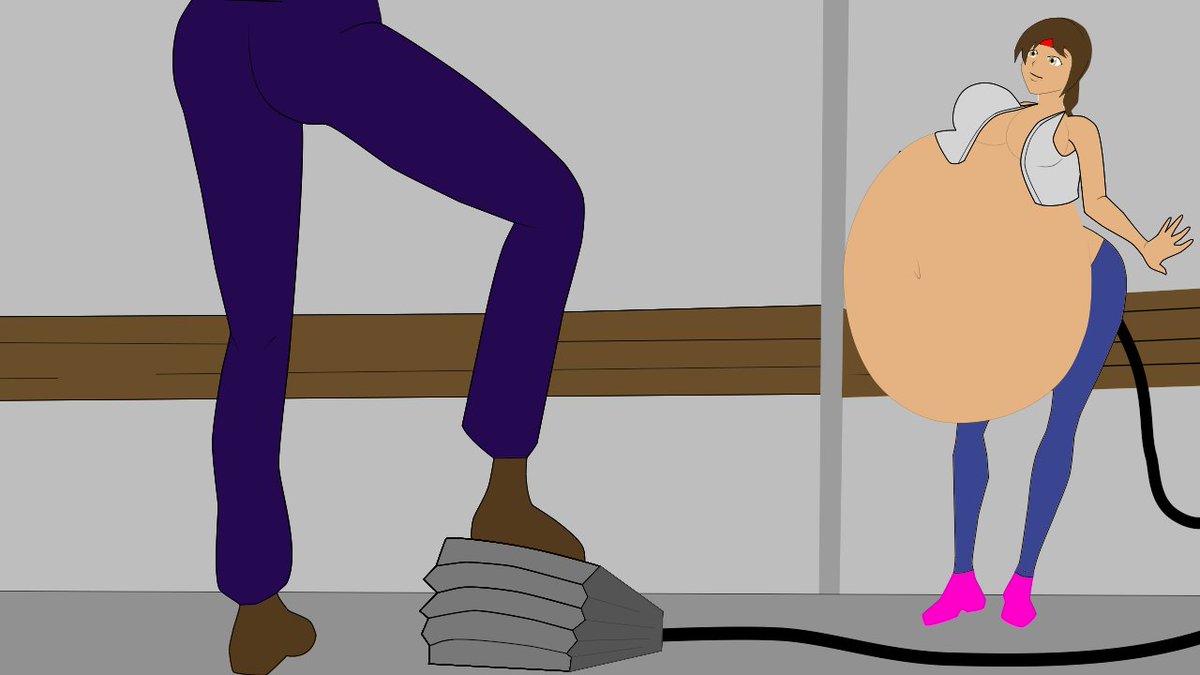
A Diastasis Recti looks like a ridge, which runs down the middle of your belly area. Some have likened the protrusion to, “about to have an alien burst from the mid section area”.
Is this an alien baby?
No. The protruding bulge is called a Diastasis Recti and it is not a hernia. A umbilical hernia and diastasis recti can co-exist, but are not related.
Latest Related Publications:
- Gastroschisis: Overview and General Information
- Robotic Hernia Repairs Most Effective Treatments for Hernias
- Bulging Stomach When Sitting Up: Diastasis Recti Information and Exercises
Official Definition:
Diastasis Recti, also known as, abdominal separation, divarication of the recti, rectus distension or recti split, is defined as a separation of the rectus abdominis muscle into right and left halves. Normally, the two sides of the muscle are joined at the linea alba at the body mid-line. It is essentially a cosmetic condition, with no associated morbidity or mortality. A diastasis recti may appear as a ridge running down the mid-line of the abdomen, anywhere from the xiphoid process to the umbilicus. It becomes more prominent with straining and may disappear when the abdominal muscles are relaxed.
Normally, the two sides of the muscle are joined at the linea alba at the body mid-line. It is essentially a cosmetic condition, with no associated morbidity or mortality. A diastasis recti may appear as a ridge running down the mid-line of the abdomen, anywhere from the xiphoid process to the umbilicus. It becomes more prominent with straining and may disappear when the abdominal muscles are relaxed.
Many people have a diastasis recti and don’t know it.
A Diastasis Recti is the widening of the gap between the 2 sections of the Rectus Abdominis (or 6 pack) abdominal muscle at the Linea Alba (mid-line connective tissue) at the front of the abdomen. The rectus abdominis muscle, also known as the “abs and lower abdominals,” is a paired muscle running vertically on each side of the anterior wall of the human abdomen. There are two parallel muscles, separated by a mid-line band of connective tissue called the linea alba (white line). Diastasis Recti often reveals itself with pooching or doming of your stomach – sometimes making you appear as if you are pregnant – men included.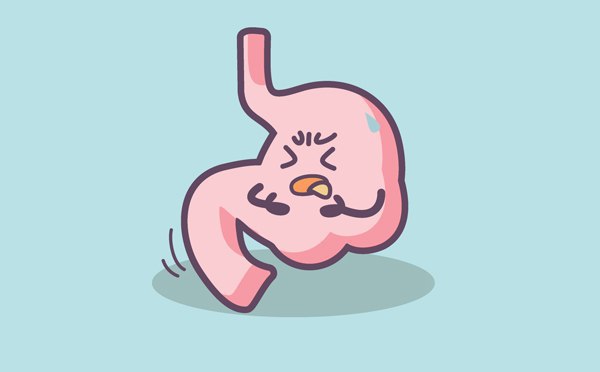 The condition is common in newborns
The condition is common in newborns
(Article continues below image.)
Fig 1. Diagram of the Human Rectus Abdominis muscle.(Continued…)
Women who are pregnant may develop Diastasis Recti due to increased tension on the abdominal wall, (The risk is higher with multiple births or many pregnancies), however, no treatment is needed for pregnant women with this condition.
Males can also develop the condition, often caused by heavy lifting, weight lifting, sudden weight gain, etc. When men have significant pain or associated hernias, a mesh repair can be performed, but typically with a scar placed from the breastbone to the umbilicus. Some cases of diastasis recti in men can be treated with physical therapy alone. You should discuss this with your doctor, who may be able to refer you to a physical therapist who can suggest strengthening exercises for your abdominal muscles. If exercises do not work, then you should talk to a plastic surgeon about a possible abdominoplasty, or “tummy tuck”, procedure.
Perform a Quick Test for Diastasis
- Lie on your back with knees bent, feet flat on the floor.
- Place a hand behind your head for support.
- Place the index and middle fingers of your other hand just above your belly button, pointing them downward.
- Raise your head and neck off the floor and press your fingers into the separation between your muscles.
- If you can fit more than two fingers into the opening, you likely have a diastasis.
- Your doctor can diagnose this condition with a simple physical exam.
Diastasis Recti Repairs
Healing the connective tissue is all about putting it in a better (narrow) position, bringing blood flow to it and protecting it when doing any type of activities so it is not being stretched nor does it have any intra-abdominal force or pressure on it.
A study in 1988 was conducted to determine if exercises could reduce the amount of separation in the rectus abdominis muscles. After a six week trial, results were shown that exercising greatly reduced the amount of the distasis.
After a six week trial, results were shown that exercising greatly reduced the amount of the distasis.
Exercises Shown to Reduce Distasis Recti Separation
Incorrect exercises, including crunches, can actually increase the distasis recti separation.
All corrective exercises should be in the form of pulling in of the abdominal muscles rather than a pushing of them outward.
Consultation of a professional physiotherapist is recommended for correct exercise routines.
Exercises for Females and Males with Diastasis Recti
- Squat with squeeze: A variation to the “Squat against the wall” is to place a small resistance ball between the knees, and squeeze the ball as you lower your body to the seated position – 20 repetitions.
- Seated squeeze: Again in a seated position, place one hand above the belly button, and the other below the belly button. With controlled breaths, with a mid-way starting point, pull the abdominals back toward the spine, hold for 2 seconds and return to the mid-way point – 100 repetitions.

- Core contraction: In a seated position, place both hands on abdominal muscles. Take small controlled breaths. Slowly contract the abdominal muscles, pulling them straight back towards the spine. Hold the contraction for 30 seconds, while maintaining the controlled breathing – 10 repetitions.
- Head lift: In a lying down position, knees bent at 90 degree angle, feet flat, slowly lift the head, chin toward your chest, (concentrate on isolation of the abdominals to prevent hip-flexors from being engaged), slowly contract abdominals toward floor, hold for two seconds, lower head to starting position for 2 seconds – 10 repetitions.
- Upright push-up: A standup pushup against the wall, with feet together arms-length away from wall, place hands flat against the wall, contract abdominal muscles toward spine, lean body towards wall, with elbows bent downward close to body, pull abdominal muscles in further, with controlled breathing. Release muscles as you push back to starting position – 20 repetitions.

- Squat against the wall: Also known as a seated squat, stand with back against the wall, feet out in front of body, slowly lower body to a seated position so knees are bent at a 90 degree angle, contracting abs toward spine as you raise body back to standing position. Optionally, this exercise can also be done using an exercise ball placed against the wall and your lower back – 20 Repetitions.
- Lying on floor: Begin by lying down on the ground on your back with both legs bent and both feet flat on the floor. Tighten the muscles of your lower abdomen and lift your hips off the floor. Perform 10 repetitions.
- Stomach press: This exercise is performed by lying down with both legs bent at about a 90 degree angle with the soles of both of your feet flat on the floor. Put both hands on your lower stomach around your belly button, and be sure that the fingers of both of your hands are pointing down toward your genitals. Breathe out and use a slow and controlled motion to lift your head and shoulders off the ground while pressing down on your lower abdomen with your hands and fingers.

- Leg Extension: Lie down with both legs bent and both feet flat on the floor. Breathe in and slowly begin to exhale while simultaneously straightening one leg and sliding it down on the floor. Use the muscles of your lower abdomen to help stabilize your straightened leg. Extend your leg as far as possible without serious pain, then inhale and return to the starting position. Repeat using both legs.
Surgery
In extreme cases, diastasis recti can be corrected during a cosmetic surgery procedure known as an abdominoplasty by creating a plication or folding of the linea alba and suturing together. This creates a tighter abdominal wall.
The skin is lifted near the pubic hair, and elevated to the level of the breast bone. The muscles are tightened in the mid-line where the tissue had been stretched. Permanent stitches are often used. In the most severe cases, mesh is used to reinforce the central repair area.
Splints, Belly Binders and Abdominal Wraps
Postpartum abdominal binding has also been traditional practice in many parts of the world for generations. This is the process of wrapping or binding your mid-section to draw the split recti muscles back together. Belly binding may ‘hold you in’ and provide support to your lower back. But wearing a splint or binder won’t strengthen or tighten the muscles.
This is the process of wrapping or binding your mid-section to draw the split recti muscles back together. Belly binding may ‘hold you in’ and provide support to your lower back. But wearing a splint or binder won’t strengthen or tighten the muscles.
Quick Facts
- Diastasis recti is a separation between the left and right side of the rectus abdominis muscle. This muscle covers the front surface of the belly area.
- A diastasis recti looks like a ridge, which runs down the middle of the belly area. It stretches from the bottom of the breastbone to the belly button. It increases with muscle straining.
- Diastasis recti is commonly seen in women who have multiple pregnancies, because the muscles have been stretched many times.
- Pregnancy-related diastasis recti often lasts long after the woman gives birth. Exercise may help improve the condition. Umbilical hernia may occur in some cases. If pain is present, surgery may be needed.
- In most cases, diastasis recti usually heals on its own.

(Engelhardt, Laura (1988). “Comparison of two abdominal exercises on the reduction of the diastasis recti abdominis of postpartum women”. ProQuest Dissertations and Theses. UMI Dissertations Publishing.)
sponsored links
Disabled World is an independent disability community established in 2004 to provide disability news and information to people with disabilities, seniors, their family and/or carers. See our homepage for informative news, reviews, sports, stories and how-tos. You can also connect with us on Twitter and Facebook or learn more on our about us page.
Permalink:
<a href=”https://www.disabled-world.com/health/hernias/diastasis-recti.php”>Bulging Stomach When Sitting Up: Diastasis Recti Information and Exercises</a>
Cite This Page (APA):
Disabled World. (2014, March 27). Bulging Stomach When Sitting Up: Diastasis Recti Information and Exercises. Disabled World. Retrieved July 15, 2023 from www.disabled-world. com/health/hernias/diastasis-recti.php
com/health/hernias/diastasis-recti.php
Disabled World provides general information only. The materials presented are never meant to substitute for professional medical care by a qualified practitioner, nor should they be construed as such. Financial support is derived from advertisements or referral programs, where indicated. Any 3rd party offering or advertising does not constitute an endorsement.
Lipoma, or wen – causes, symptoms of the disease, diagnosis and treatment
Jaundice
Tumor
1120
17 December
IMPORTANT!
The information in this section should not be used for self-diagnosis or self-treatment. In case of pain or other exacerbation of the disease, only the attending physician should prescribe diagnostic tests. For diagnosis and proper treatment, you should contact your doctor.
Lipoma: causes, symptoms, diagnosis and treatment.
Definition
Lipoma is a common tumor composed of fat cells (adipocytes) and is usually separated from surrounding tissues by a thin connective tissue capsule. Lipomas can form anywhere where fat cells are present, usually located subcutaneously, but are sometimes found on internal organs (for example, in the stomach, esophagus or intestines, bronchi, heart, or muscles).
Lipomas can form anywhere where fat cells are present, usually located subcutaneously, but are sometimes found on internal organs (for example, in the stomach, esophagus or intestines, bronchi, heart, or muscles).
Lipomas are benign neoplasms that do not tend to become malignant and do not cause discomfort to patients. The exception is those cases when lipomas are unsuccessfully located (for example, in the joint area) or grow rapidly, which happens extremely rarely.
Lipomas are the most common mesenchymal tumors (mesenchymal tumors are soft tissue tumors and specific bone tumors). The incidence is about 2.1 per 1000 people per year, and men are diagnosed slightly more often than women.
Causes of lipomas
The exact causes of lipomas are unknown. Some researchers agree that genetic anomalies play a role in their formation. Another theory suggests a link between the occurrence of a lipoma and previous trauma. Risk factors for the development of lipomas can be obesity, alcohol abuse, liver disease, impaired glucose tolerance, hyperlipidemia. The appearance of a lipoma may be the result of another disease, for example, familial multiple lipomatosis.
The appearance of a lipoma may be the result of another disease, for example, familial multiple lipomatosis.
Disease classification
Lipomas can be simple or multiple (multiple lipomatosis). The latter include Derkum’s disease, benign symmetrical lipomatosis (Madelung’s disease), familial lipomatosis, congenital infiltrating lipomatosis. Multiple lipomatosis accounts for approximately 5-10% of all detected cases of lipomas.
Depending on which tissue components are involved in the pathological process, fibrolipomas (with connective tissue elements), myolipomas (they contain muscle fibers), angiolipomas (include blood vessels), myxolipomas (contain mucous tissue), myelolipomas (contain hematopoietic tissues ).
Symptoms of lipoma
Lipomas in the subcutaneous adipose tissue feel soft and mobile, not soldered to the surrounding tissues. Lipomas are characterized by slow growth, and their size is usually from 1 to 10 cm. Larger lipomas are called “giant”. The lesions are usually painless unless they involve joints, nerves, or blood vessels. The skin over the lipoma is not changed.
The lesions are usually painless unless they involve joints, nerves, or blood vessels. The skin over the lipoma is not changed.
In the gastrointestinal tract, lipomas are submucosal fatty tumors. They are asymptomatic, but can provoke ulceration and bleeding. Esophageal lipomas can make it difficult to swallow food and liquids, causing belching, vomiting, and reflux.
Lipomas of the small intestine are diagnosed, as a rule, in older people, most often located in the ileum and dangerous by blockage (obstruction) of the intestinal lumen.
In addition, intestinal lipomas cause pain, obstructive (mechanical) jaundice, and intussusception (invasion of one part of the intestine into another).
Extremely rarely, lipomas form in the heart: subendocardially – under the inner lining of the heart (endocardium) or intramurally – inside the muscle layer (myocardium). Usually, cardiac lipomas are not encapsulated and appear as a yellow mass protruding into the cavity of the heart. Cardiac lipomas can cause chest pain, arrhythmias, and shortness of breath.
Cardiac lipomas can cause chest pain, arrhythmias, and shortness of breath.
Lipomas formed in the bronchi or lung parenchyma lead to impaired respiratory function.
Lipoma Diagnosis
Diagnosis requires a clinical examination by a physician and soft tissue ultrasound.
Ultrasound of soft tissues
Examination of soft tissues to detect pathological changes and diagnose neoplasms.
RUB 1,790
Sign up
If the gastrointestinal tract is affected, contrast studies can be used, and in the case of an atypical location of the lipoma (for example, in the heart), in addition to ultrasound, computed or magnetic resonance imaging is performed.
Which doctors to contact
Diagnosis can be made by a dermatologist,
family doctor or
therapist. Surgical treatment is performed
surgeon.
Lipoma treatment
If the lipoma is painless and does not cause discomfort, no treatment is required. An indication for the removal of subcutaneous lipomas is their unfortunate location, that is, a cosmetic defect. The most effective method of correction is surgical excision of the lipoma together with the capsule.
An indication for the removal of subcutaneous lipomas is their unfortunate location, that is, a cosmetic defect. The most effective method of correction is surgical excision of the lipoma together with the capsule.
In addition to excision for the treatment of small subcutaneous lipomas, there are conservative therapies, such as injections of lipolytic drugs, whose action is aimed at breaking down fat cells. However, after such treatment, relapses are possible.
Complications
Gastrointestinal lipomas can cause bleeding, blockage of the intestinal lumen, jaundice, and intussusception.
Cardiac lipomas can lead to embolism and cardiac arrhythmias.
Huge subcutaneous lipomas can compress nerves and surrounding structures. If a pedunculated lipoma occurs, there is a risk of its twisting, as a result of which the blood supply to the lipoma is disrupted, which is fraught with its necrosis or ulceration.
Prevention of lipoma
To prevent the occurrence of lipoma, factors that can provoke its growth should be minimized:
- avoid injury to soft tissues,
- maintain adequate weight,
- treat disorders of carbohydrate metabolism,
- monitor cholesterol levels and correct them in time.

Sources:
- Charifa A, Azmat CE, Badri T. Lipoma Pathology. 2021 Sep 20. In: StatPearls [Internet]. Treasure Island (FL): StatPearls Publishing; 2021 Jan–. PMID: 29493968.
- Kolb L, Yarrarapu SNS, Ameer MA, et al. Lipoma. [Updated 2021 Oct 2]. In: StatPearls [Internet]. Treasure Island (FL): StatPearls Publishing; 2021 Jan-. Available from:
www.ncbi.nlm.nih.gov - Usoltsev D.M., Davidyan A.A., Babich R.A. Experience in the removal of giant lipomas in the conditions of an outpatient surgery center. Inpatient replacement technologies: outpatient surgery. – 2016. – No. 1-2 (61-62). – S. 94-96.
Furuncle (boil) – symptoms, causes, signs and methods of treatment in adults in “SM-Clinic”
This disease is treated by a Dermatologist
, Surgeon
- About the disease
- Types of boils
- Symptoms of a boil
- Causes of boil development
- Diagnostics
- Expert opinion
- Treatment of furunculosis
- Prophylaxis
- Rehabilitation
- Questions and answers
- Doctors
About the disease
A furuncle is also called a boil. It occurs more often in adulthood. Men are affected somewhat more often than women. The main peak of incidence falls on the autumn and spring periods, when the body’s defenses weaken.
It occurs more often in adulthood. Men are affected somewhat more often than women. The main peak of incidence falls on the autumn and spring periods, when the body’s defenses weaken.
Unlike ostiofolliculitis and folliculitis, the formation of a furuncle is accompanied by the involvement of the surrounding tissue in the inflammatory process. This is due to the severe course of the disease.
On places devoid of hair (palms and palmar surface of the fingers, soles) boils do not develop. Most often they occur on areas of the skin that are subject to contamination (forearms, back of the hand) and friction (back of the neck, lower back, gluteal region, thighs).
Types of boils
Depending on the number of formations, single and multiple boils are distinguished. In the latter case, the disease is called furunculosis.
In the process of development, the pathology passes through three successive stages:
- infiltrative: accompanied by tissue infiltration;
- purulent-necrotic: characterized by purulent fusion of the central part of the boil and the formation of a purulent-necrotic rod;
- stage of healing: begins from the moment of spontaneous or artificial opening of the abscess and lasts until the formation of a scar.

Symptoms of a boil
At the initial stage of the development of the disease, the patient feels slight itching and tingling. On the 1st-2nd day, a formation appears that protrudes conically above the skin. The tissues turn red and become painful when touched. As the boil matures, a head appears on its top – a small accumulation of pus with a black dot in the center.
On the 3-7th day, in the form of a rod, together with the remnants of the hair, they are excreted with pus. The resulting wound is cleaned, filled with granulation tissue and healed. The swelling around it gradually decreases, the pain disappears. A small, whitish, somewhat retracted scar remains at the site of inflammation.
Multiple lesions of boils that appear simultaneously or sequentially one after another in different parts of the body – called furunculosis. A disease that lasts with small remissions for several years is considered chronic, relapsing.
Usually, a boil does not cause significant disturbances in well-being. With the defeat of a significant amount of tissue, symptoms of intoxication appear: weakness, headaches, fever. The intensity of pain depends on the location of the formation. In the face area (lips, forehead), as well as on the scrotum, the formation of a boil is accompanied by swelling of the surrounding tissues, which is explained by the looseness of the subcutaneous tissue.
With the defeat of a significant amount of tissue, symptoms of intoxication appear: weakness, headaches, fever. The intensity of pain depends on the location of the formation. In the face area (lips, forehead), as well as on the scrotum, the formation of a boil is accompanied by swelling of the surrounding tissues, which is explained by the looseness of the subcutaneous tissue.
Causes of the development of a boil
The main cause of the development of a boil is the defeat of the hair follicle or its surrounding tissues by Staphylococcus aureus, rarely white. An important factor is also a decrease in general or local immunity against the background of chronic diseases, metabolic disorders, and infections. Pathology occurs especially often in patients with diabetes mellitus, obesity, chronic liver and kidney damage, oncological diseases, etc. Infection of tissues often occurs against the background of skin damage: scratches, cuts, abrasions, constant exposure to sweat or purulent discharge (from the nose, ears).
The causes of localized furunculosis are most often incorrect methods of therapy and ignoring the doctor’s recommendations (use of compresses, undertreatment of residual compaction, washing the place where the elements appear).
Get advice
If you experience these symptoms, we recommend that you make an appointment with your doctor. Timely consultation will prevent negative consequences for your health.
You can find out more about the disease, prices for treatment and sign up for a consultation with a specialist by phone:
+7 (495) 292-39-72
Request a call back
Book online
Why SM-Clinic?
1
Treatment is carried out in accordance with clinical guidelines
2
Comprehensive assessment of the nature of the disease and treatment prognosis
3
Modern diagnostic equipment and own laboratory
9000 2 4
High level of service and balanced pricing policy
Diagnosis
Diagnosis of boils is not difficult. During a visual examination of the patient, a dermatologist discovers a characteristic formation. Its appearance allows you to assess the stage of development of the disease. During the conversation, the doctor determines the possible cause of the development of boils, identifies risk factors. For an accurate diagnosis and determination of the pathogen, bakposev of the discharge is prescribed. In case of multiple lesions, additional diagnostics is carried out:
During a visual examination of the patient, a dermatologist discovers a characteristic formation. Its appearance allows you to assess the stage of development of the disease. During the conversation, the doctor determines the possible cause of the development of boils, identifies risk factors. For an accurate diagnosis and determination of the pathogen, bakposev of the discharge is prescribed. In case of multiple lesions, additional diagnostics is carried out:
- general and biochemical blood test;
- immunogram;
- hormonal assessment;
- examination by ENT, endocrinologist and other specialists;
- examination of internal organs, paranasal sinuses, lungs, etc. depending on the specific clinical situation.
Expert opinion
Furuncle is a rather serious disease, which should be treated with great care. In no case should you self-medicate: you should not make compresses, use various ointments – in most cases this leads to the spread of the inflammatory process.
A complication of a boil can be lymphadenitis and lymphangitis (damage to the lymphatic vessels and nodes). Of particular danger are rapidly progressing acute thrombophlebitis and sepsis.
Acute thrombophlebitis usually develops with boils located near the large saphenous veins, and sepsis – with boils of the face. They are often the result of attempts to squeeze out the contents of the boil, cutting it off during shaving, trauma during massage. The prognosis for these complications is very serious.
Omarova Andzhelika Mutaevna
Coloproctologist, surgeon, Ph.D.
Treatment of furunculosis
Treatment of furuncle is only surgical, because no other therapy will be successful if the focus of purulent inflammation is not removed or opened and drained in a timely manner.
The opening of the boil is usually performed under local anesthesia and is painless for the patient. At the same time, antibiotic therapy, means for correcting immunity and eliminating background pathologies, if any, are prescribed.
Simple (uncomplicated) lesions can be treated on an outpatient basis and do not require hospitalization. But in case of a severe course, if the patient develops swelling of the soft tissues of the cheek, lip or eye, urgent hospitalization is necessary in the surgical department to constantly monitor the development of the process and prevent complications.
Strict bed rest and appropriate therapy are prescribed for high fever.
Prevention
To minimize the risk of developing boils, the skin must be regularly cleansed of impurities and fully treated for any tissue damage. People with hyperhidrosis and/or excess sebum need to pay special attention to hygiene. General measures are also important: proper nutrition, a healthy lifestyle, timely treatment of acute and chronic diseases.
Rehabilitation
After opening an uncomplicated boil, the patient goes home after 1-2. In the next 2 weeks, he needs to regularly visit a doctor for dressings, take prescribed medications. It is strictly forbidden to play sports, swim in open water or pools, overheat.
It is strictly forbidden to play sports, swim in open water or pools, overheat.
Questions and Answers
No. Self-medication and the use of folk remedies can cause complications.
Yes, when a purulent focus is located on the face, the infection can go to the meninges.
Gostishchev Victor Kuzmich. Clinical operative purulent surgery. Guide for doctors. GEOTAR-Media, 2016
Rodionov Anatoly Nikolaevich, Sydikov Akmal Abdikaharovich, Zaslavsky Denis Vladimirovich. Clinical dermatology. Illustrated guide for doctors. GEOTAR-Media, 2022
Nikolsky V. Yu., Imbryakov K. V. Furuncles and carbuncles of the face // Russian Dental Journal. 2013. No. 5.
Okulich V.K., Fedyanin S.D. RATIONAL USE OF ANTIBACTERIAL DRUGS IN PATIENTS WITH PURULENT WOUNDS, FURUNCULOSIS, BOILS AND CARBUNCULES // Bulletin of the Voronezh State Medical University. 2003. No. 4.
>
Diseases referred by the Surgeon
Soft tissue abscess
liver abscess
Appendicitis
Ascites
Atheroma
femoral hernia
Crohn’s disease
Gangrene
soft tissue hematoma
Giant cell tumor of bone
Hygroma
festering wounds
Hernia
Hernia of the white line of the abdomen
hiatal hernia
Diastasis rectus abdominis
Intestinal diverticulosis
Cholelithiasis
Keratoma
liver cyst
pancreatic cyst
salivary gland cyst
Neck cyst
stab wound
stab wound
Lipoma
Mechanical jaundice
Bowel obstruction
burns
Oleogranuloma
kidney tumor
Acute pancreatitis
Felon
Pancreatic necrosis
Inguinal hernia
Peritonitis
Barrett’s esophagus
Postoperative hernia
Umbilical hernia
Cancer of the extrahepatic bile ducts
Stomach cancer
gallbladder cancer
bowel cancer
adrenal cancer
Parathyroid Cancer
Liver cancer
Esophageal carcinoma
colon cancer
thyroid cancer
Fistula of the gallbladder
Seroma
Thyroiditis
Intestinal injury
vein thrombosis
Thrombophlebitis
Furunculosis
cholestasis
Cholecystitis
Chronic cholecystitis
Esophageal ulcer
Peptic ulcer of the stomach and duodenum
Diseases referred by Dermatologist
Acne (pimples)
Allergic dermatitis
Atopic dermatitis
Warts
Human papillomavirus (HPV)
Ingrown toenail (onychocryptosis)
Herpes (herpes virus 1, 2 types)
Hyperhidrosis (sweating)
Foot hyperhidrosis (excessive sweating)
Hyperkeratosis
Hyperkeratosis of the nails
Nail fungus (onychomycosis)
foot fungus
demodicosis
Dermatitis
Nail deformation
diabetic foot
Ichthyosis
Keratoma
warts
molluscum contagiosum
contact dermatitis
Hives
Couperose
Lichen
calluses
corns
Nevuses (moles)
Neurodermatitis
Onychodystrophy
Onycholysis
Rash under the breast
Pityriasis versicolor
Papillomas
Inguinal epidermophytosis
Pediculosis
Skin pigmentation
plantar warts
Loss of skin tone and elasticity
Prickly heat
Psoriasis
Pemphigus
Rosacea
Seborrheic dermatitis
seborrhea
Cracked feet
Acne
Folliculitis
Furunculosis
Scabies
Eczema
All doctors
VDNH metro station
Belorusskaya metro station
Molodyozhnaya metro station
Voikovskaya metro station
st.






